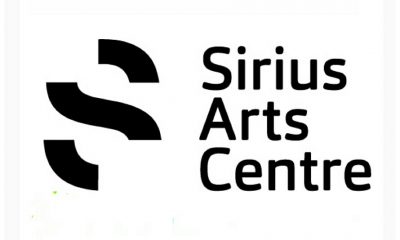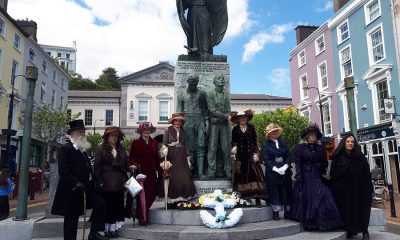Local News
A Day In The Life Of A Fota House Tour Guide
- Share
- Tweet /home/eastcork/public_html/wdir/wp-content/plugins/mvp-social-buttons/mvp-social-buttons.php on line 68
https://www.cobhedition.com/wdir/wp-content/uploads/2011/07/Niall-Foley.gif&description=A Day In The Life Of A Fota House Tour Guide', 'pinterestShare', 'width=750,height=350'); return false;" title="Pin This Post">
One of the side effects of being a night bird is that the morning comes all too soon. Having convinced myself that it really is time to emerge from my cocoon and having completed the tasks of washing, shaving and decorously arranging the few hairs that nature has decided is adequate for an aging guy, the next decision is breakfast. This is one of the days simple decisions as it just consists of turning on the kettle, dropping a tea bag in a mug, organise a couple of slices of brown soda bread and down the lot. Then it’s either off to Fota, or the research department of the city or county library to see what I can learn about the house, family or staff.
A little over a year ago, in response to a newspaper article, I contacted the Irish Heritage Trust and volunteered to become a tour guide in Fota House. Fota was among the estates granted to the Barrymore family for their support in the Anglo Norman invasion of Ireland in the late 1100’s. The house, with its world famous arboretum, is located on the island of Fota in Cork Harbour.
As a tour guide my primary involvement is showing visitors around the house, a Regency mansion incorporating an old hunting lodge. Restoration work has been carried out on the façade and roof over the past few years and at the moment the Trust is carrying out internal conservation and restoration. The completed areas reflect how the house would have looked in its prime. When, back in the 1820’s the Barrymore’s decided to make Fota their principal Irish home they and they were influenced by the classical periods of Rome and Greece and the house reflects those eras.
Having welcomed the visitors on behalf of The Irish Heritage Trust and given them a brief introduction to the building and the family history, they are brought into the spacious reception hall with its marbled columns and decorative plaster ceiling. One particular aspect of this area, that never fails to impress, is the under floor heating, which still works, and is a reference back to the old Roman devised Hypercaust heating system.
The visitors are then introduced to the various reception rooms on the ground floor.As the journey progresses they are given an understanding of what each of the rooms was used for and how their uses changed over the years to accommodate the family needs.The Drawing Room with its French Empire style ceiling, enormous mirrors and view over the gardens are always a source of comment. Similarly the columned Dining Room decorated with its symbolic plaster ceiling and family portraits and huge dining table are a cause of comment.
One of the principal areas that visitors seem to engage with are the servant’squarters and work areas. The ten bedroom female servants wing, the Butlers and Housekeepers areas along with the nursery wing are a constant source of interest.
However it is when the visitors descend into the Game Larder, Kitchen and Scullery areas that the house really comes alive for them, especially when they hear the stories of the people who worked there and their lives.
Since my involvement with Fota House started I have become fascinated with the family history and I am researching the various generations and hope to expand it to social history to include the history of people who either worked or lived on the estate, so if anyone has any information, either first or second hand about the Barry family of any of the staff I would love to hear from them. My email is cjfoley1@eircom.net and my mobile is 087 2471753.
-

 Local News1 week ago
Local News1 week agoCyclists of all abilities encouraged to join Fort2Fort Charity Cycle 2024Saturday, 8th June
-

 Local News1 week ago
Local News1 week agoCrosshaven RNLI Assist Two on Disabled Yacht
-

 Announcements1 week ago
Announcements1 week agoCobh Youth & Social Projects CLG have the following vacancies
-

 Events & Entertainment1 week ago
Events & Entertainment1 week agoSIRIUS ARTS CENTRE: COMMISSION: Aikaterini Gegisian
-

 Sport1 week ago
Sport1 week agoJohn O’Shea extended as Interim Head Coach for June window
-

 Local News2 days ago
Local News2 days agoLusitania Commemoration events to take place in Cobh on Monday 6th May
-

 Local Soccer2 weeks ago
Local Soccer2 weeks agoCobh Wanderers face College Corinthians in 1st Round of Sports Direct Men’s FAI Cup
-

 Local Soccer6 hours ago
Local Soccer6 hours agoRESULT: Cobh Ramblers 2-1 Bray Wanderers
-

 Local News8 hours ago
Local News8 hours ago‘Paint Your Town Red’ – Up to €60,000 Worth of Paint to Be Given to Local Communities‘
-

 Announcements8 hours ago
Announcements8 hours agoCobh Flower and Horticulture Club next meeting Monday 13th May









